1. District Flood Severity Index (DFSI) – Environment
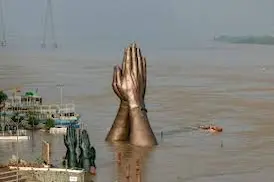
Why in News?
Researchers from IIT Delhi and IIT Gandhinagar have developed the District Flood Severity Index (DFSI) to assess historical flood impacts across districts in India, aiding in targeted flood management and planning.
Key Facts
- Purpose: Measures historical severity of floods at the district level.
- Database Used: India Flood Inventory with Impacts (IFI–Impacts).
- Parameters:
- Mean duration of flood events (days).
- % of area historically flooded.
- Deaths & injuries due to flooding.
- District population.
- Key Findings:
- Patna: Highest flood severity ranking.
- Thiruvananthapuram: High number of flood events but not in top 30 for severity.
- Assam’s Dhemaji, Kamrup, Nagaon: Over 178 flood events (~3 per year).
- Urban Flood Causes: Both hydrometeorological reasons and poor urban planning.
Significance
- Facilitates district-specific flood preparedness.
- Improves disaster management planning & resource allocation.
- Helps integrate climate resilience into local governance.
Exam Connect – Possible Questions
Prelims
1. Which of the following is not a parameter considered in the District Flood Severity Index?
A. Mean duration of flood events
B. Percentage of district area historically flooded
C. Literacy rate of the district
D. Number of deaths and injuries due to floods
Answer: C. Literacy rate of the district
2. Patna’s top ranking in the District Flood Severity Index indicates
A. It experiences the highest number of floods annually.
B. It has historically suffered severe flood impacts based on multiple parameters.
C. It has the largest flood-prone area in the world.
D. It records the highest rainfall in India.
Answer: B. It has historically suffered severe flood impacts based on multiple parameters.
Mains
1. Explain how the District Flood Severity Index can enhance India’s disaster preparedness and flood management strategies.
2. Discuss the significance of integrating historical flood impact data into urban and rural planning in the context of increasing climate risks.
2. RBI’s Monetary Policy Review – Balancing Growth Optimism with Inflationary Caution – Economy
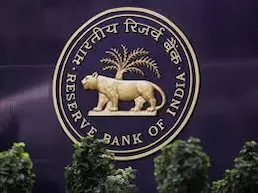
Why in News?
The Reserve Bank of India (RBI), in its latest Monetary Policy Committee (MPC) meeting, decided to keep the repo rate unchanged, adopting a neutral stance while acknowledging growth optimism and cautioning about potential inflationary pressures in FY26–FY27.
Key Facts
- Repo Rate: Unchanged; total 100 bps cut since Feb 2025.
- CPI Inflation:
- June 2025 → ~2%.
- Q3–Q4 FY26 → Projected above 4%.
- FY27 average → Likely above 4.5%.
- Vegetable Prices:
- Inflation in 2024: 27%.
- Current: ~–15% (deflation).
- Volatile due to 6% CPI weight.
- GDP Growth Projection (FY26): 6.5%.
- External Risks: US reciprocal tariffs; merchandise exports contraction; strong services exports.
- Current Account Deficit (FY26): ~0.9% of GDP.
- Forex Reserves: $689 billion → 11 months’ import cover.
Background & Context
- Monetary Policy Objective: Maintain price stability while supporting growth (RBI Act, 1934 amendment in 2016 set CPI inflation target at 4% ± 2%).
- Recent Policy Actions: Rate cuts to stimulate investment amid low inflation; liquidity remains comfortable.
- Consumption & Employment Trends: Urban demand lagging due to IT hiring slowdown and stagnant incomes.
- Investment Trends:
- Public CapEx ↑ 52% in Q1 FY26.
- Private investment cautious due to global uncertainties.
Significance
- Positives:
- Balanced approach to avoid overheating the economy.
- Adequate forex reserves buffer against external shocks.
- Low real interest rates (~1%) support credit growth.
- Concerns:
- Inflation rebound risk from base effect and supply-side factors.
- Urban consumption weakness.
- Export risks due to global trade tensions.
- Way Forward:
- Maintain vigilance on food price volatility.
- Strengthen rural demand via targeted government spending.
- Diversify export markets to mitigate tariff impact.
Exam Connect – Possible Questions
Prelims
1. Which of the following statements is/are correct regarding the RBI’s Monetary Policy framework?
1.The inflation target under the RBI Act is 4% with a tolerance band of ± 2%.
2. The repo rate is the rate at which RBI borrows money from commercial banks.
3.The Monetary Policy Committee is chaired by the Finance Minister.
A. 1 only
B. 1 and 2 only
C. 1 and 3 only
D. 1, 2 and 3
Answer: A. 1 only
2. In the context of India’s macroeconomic indicators, which of the following is not a component of the Current Account?
A. Merchandise trade balance
B. Services exports and imports
C. Foreign direct investment inflows
D. Primary income and transfers
Answer: C. Foreign direct investment inflows
Mains
1. The RBI’s latest monetary policy reflects a delicate balancing act between supporting growth and containing inflation. Discuss the challenges in managing this trade-off in the current global economic environment.
2. Analyse the role of public capital expenditure in sustaining India’s GDP growth when private investment remains sluggish. can be both a tool for empowerment and a shield against exploitation. Analyse with reference to the Yashoda AI Initiative.
3. Indian Flapshell Turtle – Rare Albino Sighting in Gujarat – Environment

Why in News?
An albino Indian flapshell turtle (Lissemys punctata) with a bright yellow shell and skin was spotted in a freshwater lake in Chikodra village, Gujarat — a rare genetic anomaly that has brought attention to the conservation of this vulnerable species.
Key Facts
- Scientific Name: Lissemys punctata.
- Distribution: Pakistan, India, Sri Lanka, Nepal, Bangladesh, Myanmar.
- Habitat:
- Shallow, slow-moving/stagnant waters (rivers, streams, marshes, ponds, lakes, irrigation canals).
- Prefers sandy/muddy bottoms for burrowing.
- Identification:
- Femoral flaps covering limbs when retracted into the shell.
- Oval, soft shell — evolutionary link to hard-shelled turtles.
- Size & Lifespan: Up to 370 mm; ~20 years.
- Diet: Omnivorous; generally solitary; diurnal.
- Adaptations: Can survive 120–160 days of drought.
- Conservation Status:
- IUCN Red List: Vulnerable.
- CITES: Appendix I.
- Wildlife (Protection) Act, 1972: Schedule I.
About Albinism in Animals
- Cause: Rare recessive genetic mutation affecting melanin production.
- Occurrence Rate: ~1 in 10,000 births.
- Effects: Lack of pigmentation in skin, hair, and eyes (eyes may appear pink or red).
- Partial Albinism (Leucism): White skin/fur with normal eye pigmentation.
Significance
- Rare sightings highlight biodiversity richness and the need for habitat protection.
- Adds urgency to conservation of freshwater ecosystems in South Asia.
- Raises awareness about threats like poaching, habitat loss, and pollution.
Exam Connect – Possible Questions
Prelims
1. With reference to the Indian flapshell turtle, consider the following statements:
1. It is listed in Schedule I of the Wildlife (Protection) Act, 1972.
2. It can survive several months without water during drought conditions.
3. It is classified as Endangered by the IUCN.
Which of the statements given above is/are correct?
A. 1 and 2 only
B. 2 and 3 only
C. 1 and 3 only
D. 1, 2 and 3
Answer: A. 1 and 2 only
2. Albinism, as observed in the recently sighted Indian flapshell turtle, is caused by
A. A dominant gene mutation leading to excess melanin.
B. A recessive gene mutation leading to reduced or absent melanin production.
C. A deficiency of carotenoids in the diet.
D. An environmental adaptation to bright sunlight.
Answer: B. A recessive gene mutation leading to reduced or absent melanin production.
Mains
1. Discuss the ecological importance of freshwater turtle species like the Indian flapshell turtle and the threats they face in India.
2. Rare genetic anomalies such as albinism can serve as biological indicators of species diversity. Examine their role in biodiversity conservation.
4. India’s Herbicide Revolution – Changing Trends in Crop Protection – Economy
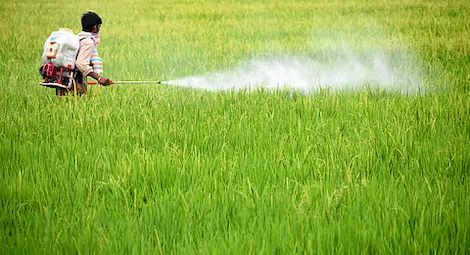
Why in News?
India’s agricultural sector is witnessing a rapid rise in herbicide use, driven by labour shortages, rising wages, and a shift towards preventive weed management. This marks a major transformation in crop protection practices and market dynamics.
Key Facts
- Crop Protection Chemicals: Include herbicides, insecticides, fungicides.
- Market Size: Organised crop protection market ~₹24,500 crore.
- Herbicides: ~₹8,200 crore, growing >10% annually.
- Drivers of Growth:
- Labour shortages & rising wages: ₹326.2/day (2019) → ₹447.6/day (2024).
- Shift to preventive herbicide use (pre-emergent & early post-emergent sprays).
- Market Structure: Dominated by multinational corporations, but Indian companies increasing innovation.
- Example: Crystal Crop Protection Ltd (CCPL) → launched Sikosa herbicide (two active ingredients, competitive pricing).
- Crop Impact Example: White-backed plant hopper → damages rice crops & transmits Fiji virus.
Background & Context
- Herbicides: Chemicals used to control or kill unwanted plants (weeds).
- Preventive vs Reactive Use:
- Preventive: Applied before or just after weed emergence → reduces manual weeding costs.
- Reactive: Applied after heavy weed growth → requires more labour and higher doses.
- Economic Link: Herbicide adoption improves efficiency but raises environmental concerns if overused.
Significance
- Positives:
- Reduces dependence on scarce rural labour.
- Saves time during peak sowing/harvesting seasons.
- Encourages modern farm management techniques.
- Concerns:
- Risk of herbicide-resistant weeds.
- Environmental impact on soil and water quality.
- Small farmers may face cost barriers.
- Way Forward:
- Promote integrated weed management (combination of mechanical, manual, and chemical methods).
- Encourage indigenous R&D to reduce dependence on imports.
- Strengthen farmer training on correct dosage and application timing.
Exam Connect – Possible Questions
Prelims
1. Which of the following best describes a pre-emergent herbicide?
A. A chemical applied after weeds have fully matured.
B. A chemical applied before or just after weed seeds germinate to prevent growth.
C. A chemical used to treat fungal infections in plants.
D. A chemical sprayed only on perennial weeds.
Answer: B. A chemical applied before or just after weed seeds germinate to prevent growth.
2. Consider the following statements regarding India’s crop protection market:
1. Herbicides form the largest segment of India’s crop protection market.
2. Labour shortages and rising wages are major drivers of herbicide adoption.
3. Herbicides are primarily used for insect control in cereal crops.
Which of the statements given above is/are correct?
A. 1 and 2 only
B. 2 only
C. 1 and 3 only
D. 1, 2 and 3
Answer: B. 2 only
Mains
1. Discuss the economic and environmental implications of the rising herbicide use in Indian agriculture.
2. Labour shortages are transforming crop protection practices in India. Analyse this trend with reference to the herbicide market’s growth.
5. Lalit Kala Akademi & 64th National Exhibition of Art (NEA) – History & Culture
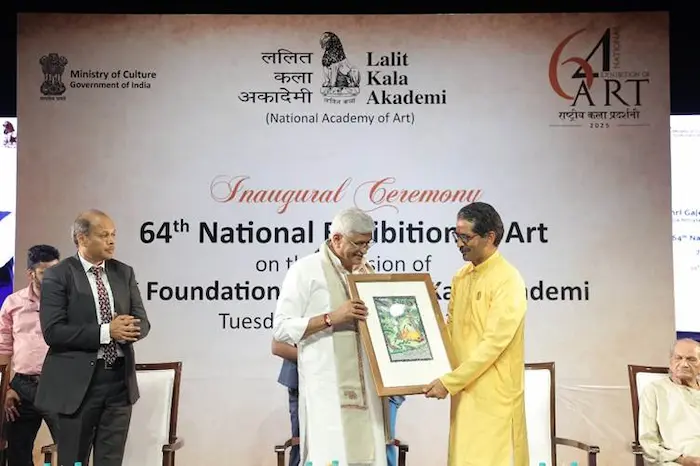
Why in News?
The 64th National Exhibition of Art (NEA), organised by the Lalit Kala Akademi — India’s National Academy of Art — was inaugurated in New Delhi. The exhibition runs from 5 August to 15 September 2025 at Kamani Auditorium and Lalit Kala Art Galleries, showcasing a wide range of visual art forms and promoting India’s cultural heritage.
Key Facts
- Establishment: 5 August 1954 by Maulana Abul Kalam Azad, then Minister for Education.
- Legal Status: Statutory autonomous organisation (1957) under Societies Registration Act, 1860.
- Funding: Ministry of Culture, Government of India.
- Structure:
- General Council – apex body.
- Executive Board – implements policies.
- Committees – advisory and specialised.
- Regional Centres: Chennai, Kolkata, Lucknow, Bhubaneswar, Garhi (New Delhi).
- Functions:
- Promote modern, contemporary, folk, and tribal visual arts.
- Maintain a permanent art collection.
- Organise exhibitions, workshops, and artist camps.
- International Role: Cultural exchange through international agreements and exhibitions.
- Flagship Events:
- National Exhibition of Art – annual since 1955.
- Triennale India – major international art event.
- Print Biennale India – focuses on printmaking.
Significance of the NEA
- Platform for Artists: Encourages both emerging and established artists.
- Cultural Diplomacy: Strengthens India’s soft power by projecting artistic achievements globally.
- Cultural Preservation: Showcases diverse Indian visual art forms and traditions.
Exam Connect – Possible Questions
Prelims
1. Which of the following statements is/are correct about the Lalit Kala Akademi?
1. It was established in 1954 and inaugurated by Maulana Abul Kalam Azad.
2. It is a statutory body created under an Act of Parliament in 1957.
3. It functions under the Ministry of Culture, Government of India.
A. 1 and 2 only
B. 2 and 3 only
C. 1 and 3 only
D. 1, 2 and 3
Answer: D. 1, 2 and 3
2. The Triennale India, organised by the Lalit Kala Akademi, is primarily related to
A. Indian classical dance forms
B. International visual arts
C. Literature and creative writing
D. Folk music and theatre
Answer: B. International visual arts
Mains
1. Examine the role of the Lalit Kala Akademi in preserving and promoting Indian visual arts. How does it contribute to India’s cultural diplomacy?
2. Discuss the significance of platforms like the National Exhibition of Art in nurturing contemporary art while safeguarding India’s folk and tribal traditions.
6. Yashoda AI Initiative – Empowering Women through AI Literacy – Governance
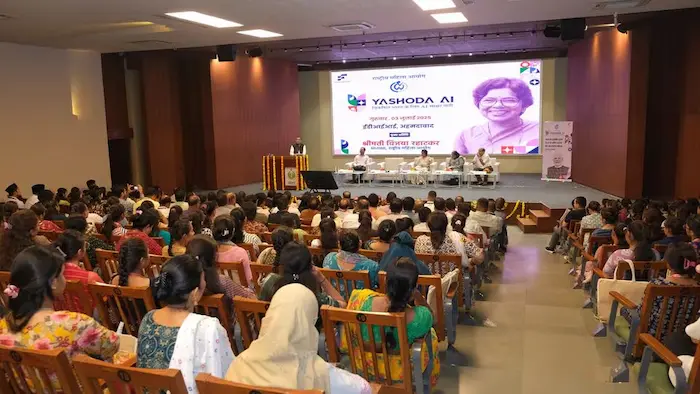
Why in News?
The Minister of State for Women and Child Development informed the Rajya Sabha about the launch of the Yashoda AI Initiative — a nationwide AI literacy programme aimed at empowering women, particularly from rural and semi-urban areas, with digital skills and awareness on AI-related safety.
Key Facts
- Launch: May 2025.
- Implementing Body: National Commission for Women (NCW) in partnership with Future Shift Labs (FSL).
- Beneficiaries so far: ~2,500 women trained.
- Focus Areas:
- AI literacy and applications.
- Cybersecurity and digital privacy.
- Safe online practices.
- Awareness of AI-driven crimes.
- Target Audience:
- Rural and semi-urban women.
- Members of Self-Help Groups (SHGs).
- Local elected representatives (Sarpanch, Pradhan, Parshad, Mayor, MLA).
- ASHA workers.
Background & Context
- Need: Rising AI integration in daily life increases both opportunities and risks for women in digital spaces.
- NCW Role: Apex body promoting and protecting women’s rights, expanding focus to digital empowerment.
Significance
- Positives:
- Bridges gender digital divide.
- Empowers women in decision-making & governance.
- Reduces vulnerability to online frauds and cybercrime.
- Challenges:
- Ensuring reach in remote, low-connectivity regions.
- Sustaining long-term skill application post-training.
- Way Forward:
- Integrate with Digital India and Skill India missions.
- Periodic refresher courses and vernacular training material.
Exam Connect – Possible Questions
Prelims
1. The Yashoda AI Initiative is implemented by
A. Ministry of Electronics and IT
B. National Commission for Women in partnership with Future Shift Labs
C. NITI Aayog in collaboration with Google India
D. Ministry of Education in partnership with IIT Delhi
Answer: B. National Commission for Women in partnership with Future Shift Labs
2. Which of the following is NOT a primary focus of the Yashoda AI Initiative?
A. Digital privacy
B. Cybersecurity awareness
C. Artificial intelligence literacy
D. Hardware manufacturing training
Answer: D. Hardware manufacturing training
Mains
1. Digital literacy for women is a key pillar of inclusive governance. Evaluate the role of initiatives like Yashoda AI in bridging the gender digital divide in India.
2. Discuss the potential of AI literacy programmes in empowering grassroots women leaders to engage more effectively with e-governance and public service delivery.

